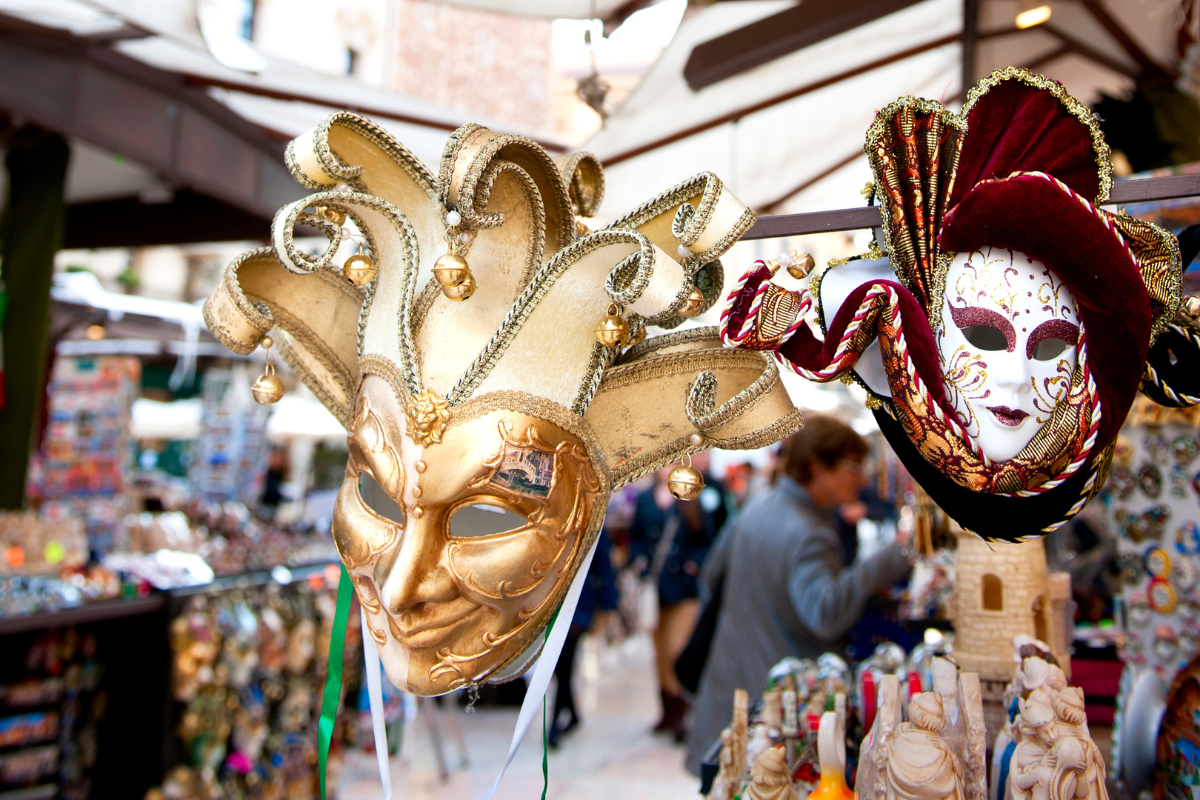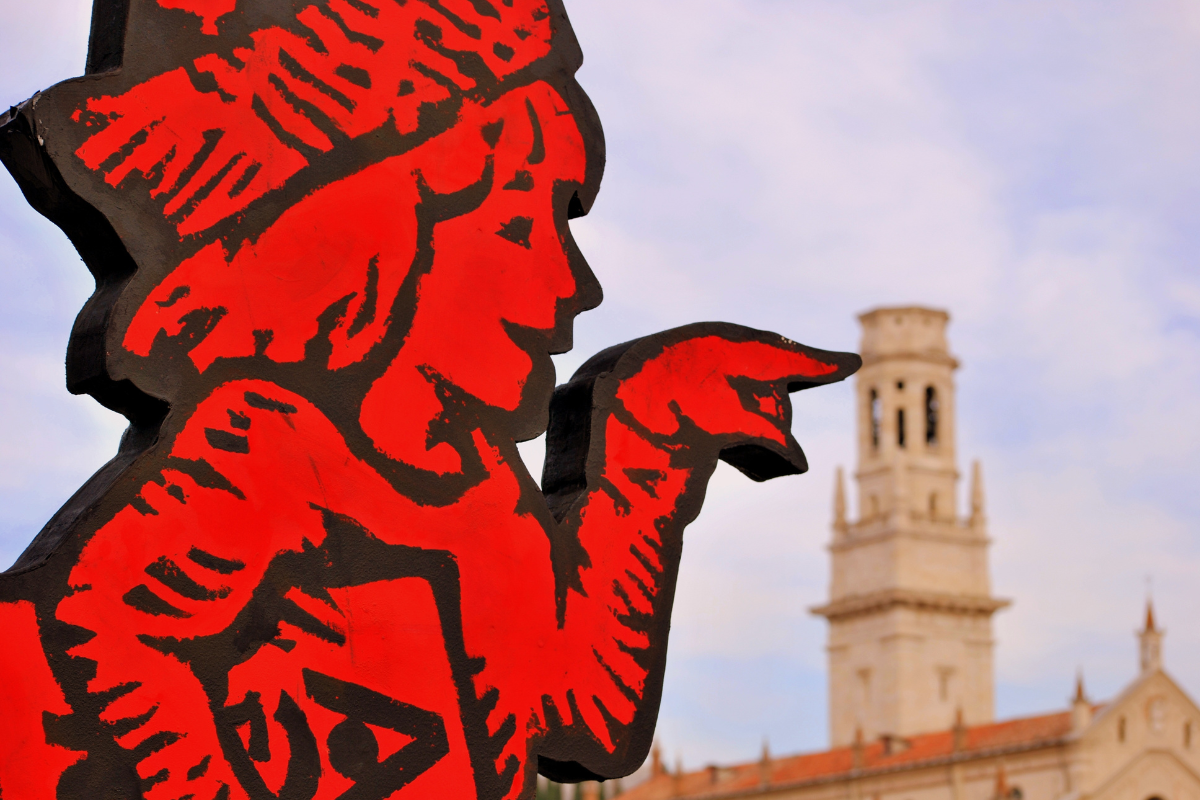TYPICAL FOOD
PANDORO
Pandoro is a typical Christmas cake from Verona. It was created at the end of the XIX century and it comes from the “pan de oro” (golden bread, a typical Christmas cake of Venice) and the “nadalin”, which has been famous from the Medieval Age as a Christmas cake. The official birth dates back to the 14th of October 1894, when the baker Domenico Melegatti, founder of the confectionary industry with the same name, got the official patent to realize a soft cake, whose shape was invented by the impressionist painter Angelo Dall’Oca Bianca and looks like an eight-pointed star. The Pandoro of Verona is a soft and gilded cake, smelling of vanilla, sugar and butter. Without custard, chocolate or candied fruit, it is served with a wipe of icing sugar, to be dusted just before cutting the cake, so it will not lose its soft consistency. Together with the Panettone of Milan is one of the most famous and beloved Christmas cakes in Italy.Ingredients: 600 gr flour, 250 gr butter, 8 eggs, 200 gr sugar, 30 gr brewer’s yeast, ½ glass single cream, 50 gr icing sugar, grated lemon peel, 1 bag vanillin.
PEARÀ
Pearà (Venetian term, literally "peppered") is a traditional Veronese sauce made with bread crumbs, beef and hen stock, beef marrow and black pepper. It is served exclusively together with bollito misto, making Lesso e pearà (lesso is Venetian for bollito), a typical dish unique to Verona and its surroundings. Preparation of pearà is closely linked to that of lesso, from whose stock it's made and whose meats it accompanies. Stock is made by simmering beef, hen and herbs (carrot, onion and celery); the complete recipe also includes calf's head and oxtail.
6 EVENTS YOU CAN’T MISS
1- SANTA LUCIA'S MARKETS
Santa Lucia’s markets are a traditional market for Santa Lucia’s day (13th of December) usually held in the heart of the city center, where you can find exhibitors from all over Italy that expose their typical and handmade products, offering you an unmissable occasion to find particular stuff. In the dialect of Verona they are called Banchéti de Santa Lussia, and they are dedicated to Santa Lucia, who lived in Sicily at the end of the III century. According to the tradition, in Verona it is believed that in the night between the 12th and the 13th of December Santa Lucia, with her trusted assistant Castaldo and a donkey, brings sweets and toys to good children, and sweet coal to the bad ones. This tradition dates back to the XIII century, when a dangerous ill of the eyes spread in Verona, and this ill hit especially children. Parents and relatives started to make a pilgrimage to Santa Agnese church, as a vow to ask to stop the epidemic. Also children were forced to participate in this pilgrimage on bare foot, with the promise that Santa Lucia would have filled their shoes and socks with presents and sweets.
2- VERONA IN LOVE
For centuries Verona has been a synonym for Love. And if Shakespeare sanctified the city by setting in Verona the unforgettable “Romeo and Juliet”, it is impossible to think of a better city to celebrate your own Valentine’s Day. Every year around Valentine’s Day Verona becomes the City of Love and the city is lit up by people, colours and music. The squares of the city center, in particular piazza Bra, piazza dei Signori and Cortile Mercato Vecchio, are the heart of this event. A large-scale festival, with lots of initiatives to satisfy every person: the most romantic with the one-minute long kiss, the sports addicted with the marathon through the city center, the artists with exhibitions in the great palaces in Verona, the music lovers with choir performances in the squares and also the most greedy with chocolate sculptures and the famous heart shaped market that became the symbol of Verona in Love.
3- THE "BACANAL DEL GNOCO" - VERONA'S CARNIVAL
Dating back to the middle Ages, Verona’s Carnival, whose original name is “Bacanal del Gnoco”, has its roots during the years of Tomaso Vico, a XVI-century doctor that wrote in his testament to distribute every year food and nourishment to the population of St. Zeno’s area. It can be considered the most ancient Carnival in Europe that survived until nowadays. Every year a big parade with spectacular parade floats, dancers and music moves through the city center, guided by Papà del Gnocco. The Papà del Gnocco is the most important and antique mask of the carnival of Verona. Its festival takes place on the so-called “Fat Friday”, which corresponds to the big manifestation of the Carnival, the cart parade through the city. The Papà del Gnocco is elected every year after a campaign that requires a lot of effort. The character it’s represented by an old bearded man that wears a singularly white costume with pieces of red cloth stitched on it. In the right hand he holds a carving fork and on the top of it there’s a huge gnocchi. The following is composed of “Macaroni”, who were his supporters during the campaign for the election. The Papà del Gnocco presides over the big distribution of the gnocchi to the population.
4- TOCATÌ
Dive into Verona and its local culture by participating in the Festival organised annually by Associazione Giochi Antichi (AGA) in collaboration with the Municipality of Verona, Department of Culture. The neighbourhood of Veronetta shuts down the streets so that people can play like kids again. You’ll see everything from giant chess boards to tug-of-war, traditional Italian street games, alongside the guests of honour. Every year a different country is invited to participate and share their traditional games, dances and stories with the Italian people. Tocatì therefore an invitation to listen, participate, and share your culture through games, music and dances.
5- VINITALY
Vinitaly is the international wine and spirits fair, which takes place in Verona every year in April since 1967. The fair receives producers, importers, distributors, experts, journalists and opinion leaders coming from all over the world. It also hosts more than 50 thematic tasting every year, with wines from Italy and from abroad and with a program built to face the most important problems related to the demand and supply of the wine market. The fair has not only expositive areas dedicated to the wine producers, but also workshops, buyers clubs and special areas dedicated to the promotion of the label Made in Italy and the emergent companies.Moreover, Vinitaly also organises Vinitaly in the City, a winebar event open to all the wine lovers, held in the city center of Verona, where you can buy a glass to carry from one exhibitor to the other to taste the different wines. Vinitaly has also the role of ambassador of Italian wines in the world, through Vinitaly in the World, organizing events in the most important and strategic international areas.
6- HOSTARIA
Hostaria is one of the most popular wine and food events held in the city centre of Verona. This wine festival, held every year around October, includes tastings, cultural events and entertainment. Verona's city centre is transformed into an open-air wine cellar, in a journey of discovery through Italy's food and wine sector: from small producers to large consortia, without neglecting Italian cuisine and its excellence.







Follow us